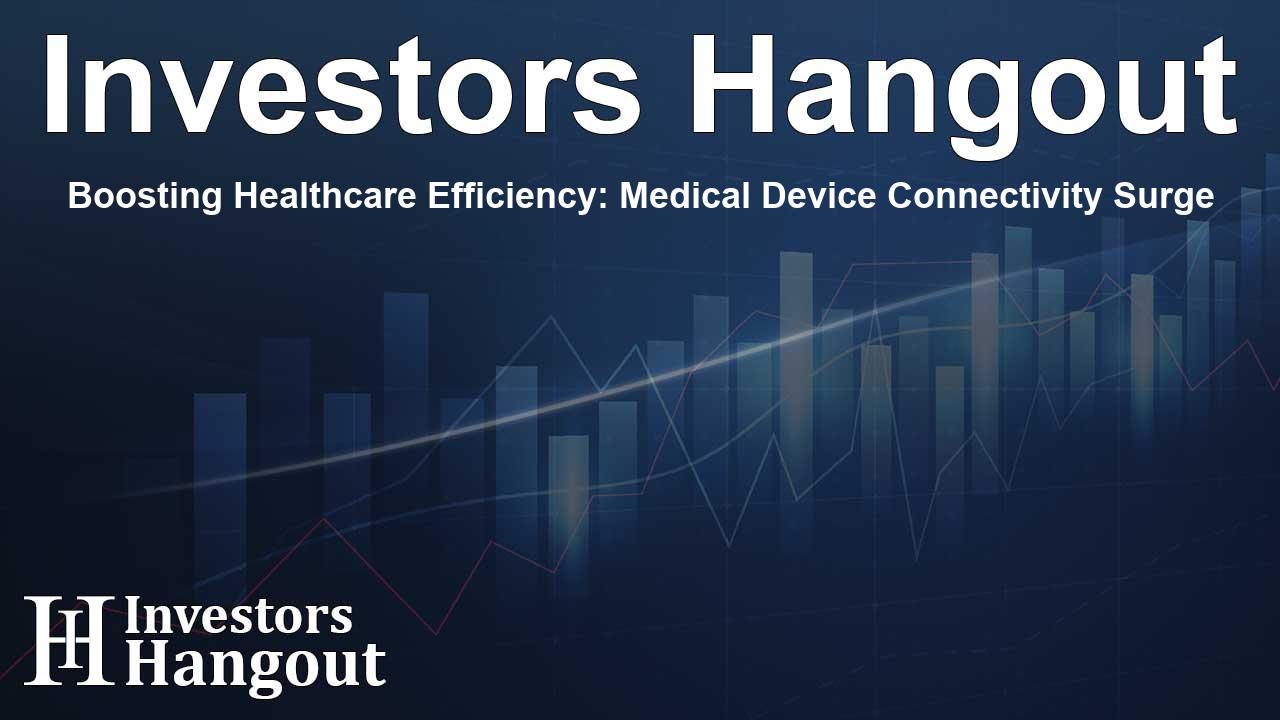Boosting Healthcare Efficiency: Medical Device Connectivity Surge

Understanding the Medical Device Connectivity Market Growth
The medical device connectivity market is on a trajectory of remarkable growth, driven by the urgent need for improved data integration in healthcare systems. Currently set to expand significantly, this market is expected to reach an impressive revenue of USD 13.4 billion by 2031, with a robust compound annual growth rate (CAGR) of 23.40% projected from 2024 to 2031. This remarkable evolution in the industry is poised to transform the manner in which healthcare professionals interact with and relay critical patient information.
Market Dynamics and Growth Drivers
Increasing Demand for Integrative Healthcare Solutions
At the core of this market expansion is the escalating demand for integrated healthcare solutions. As medical facilities seek to enhance their operational efficiencies, seamless connectivity between different medical devices has become non-negotiable. Hospitals and research institutions are increasingly investing in Internet of Things (IoT)-enabled devices to facilitate better monitoring and management of patient care.
Advancements in Technology
Technological innovations have also been vital in driving this market forward. The advent of IoT technology in healthcare devices has paved the way for smoother communication channels between patients and healthcare providers. This progression not only streamlines clinical workflows but also ensures that patient outcomes are significantly improved. Consequently, healthcare providers are eager to adopt IoT solutions that promise real-time data exchange and access to essential health information, making it a fundamental aspect of contemporary healthcare strategy.
Challenges Facing the Market
High Implementation Costs
Despite these advancements, several challenges threaten the growth trajectory of the medical device connectivity market. One prominent obstacle is the high initial costs associated with implementing these advanced technologies. Many healthcare facilities, particularly smaller clinics, often find themselves financially constrained, making it difficult to invest in the latest connectivity solutions.
Cybersecurity Concerns
Another significant concern is cybersecurity. With the increasing reliance on connected devices comes the risk of data breaches and cyber attacks on patient information. As this connectivity risk grows, providers may become apprehensive about adopting such technologies without robust security measures in place.
Geographical Insights and Industry Leadership
North America stands out as a leader in the medical device connectivity market, propelled by its advanced healthcare infrastructure and widespread use of IoT in medical settings. The region's commitment to enhancing patient-centric care through refined electronic health record (EHR) systems fosters an environment ripe for innovation. Not surprisingly, significant organizations are concentrating their research and development efforts to meet escalating regional demands, setting a benchmark for similar markets worldwide.
Key Players in the Medical Device Connectivity Landscape
The landscape of the medical device connectivity market comprises key players that are championing innovation and competition. These include industry leaders recognized for their significant contributions towards enhancing connectivity solutions. Keeping in mind the impact these organizations have on market dynamics, they actively work on strategies that not only improve product offerings but also refine their market positions against competitors.
Future of the Medical Device Connectivity Market
As we look toward the future, the medical device connectivity market appears poised for sustained growth. Ongoing advancements in technology, coupled with increasing government initiatives aimed at improving healthcare infrastructure, are expected to maintain momentum in this sector. Moreover, with a highly adaptable marketplace, businesses are likely to innovate continuously, ensuring they remain competitive amid the changing landscape.
Frequently Asked Questions
What is the projected growth of the medical device connectivity market?
The medical device connectivity market is projected to grow significantly, reaching USD 13.4 billion by 2031 at a CAGR of 23.40% from 2024 to 2031.
What are the key drivers behind market growth?
Key drivers include the demand for integrated healthcare solutions, advancements in IoT technology, and government initiatives promoting healthcare interoperability.
What challenges does the market face?
Challenges such as high implementation costs and cybersecurity concerns pose significant barriers to adopting connected medical devices.
Which region leads the medical device connectivity market?
North America currently dominates the medical device connectivity market due to its advanced healthcare infrastructure and innovation in medical technologies.
Who are the major players in this market?
Major players include Capsule Technologies, Qualcomm, Cerner Corporation, GE Healthcare, and Medtronic, among others, all of whom strive to enhance device connectivity solutions.
About The Author
Contact Kelly Martin privately here. Or send an email with ATTN: Kelly Martin as the subject to contact@investorshangout.com.
About Investors Hangout
Investors Hangout is a leading online stock forum for financial discussion and learning, offering a wide range of free tools and resources. It draws in traders of all levels, who exchange market knowledge, investigate trading tactics, and keep an eye on industry developments in real time. Featuring financial articles, stock message boards, quotes, charts, company profiles, and live news updates. Through cooperative learning and a wealth of informational resources, it helps users from novices creating their first portfolios to experts honing their techniques. Join Investors Hangout today: https://investorshangout.com/
The content of this article is based on factual, publicly available information and does not represent legal, financial, or investment advice. Investors Hangout does not offer financial advice, and the author is not a licensed financial advisor. Consult a qualified advisor before making any financial or investment decisions based on this article. This article should not be considered advice to purchase, sell, or hold any securities or other investments. If any of the material provided here is inaccurate, please contact us for corrections.
